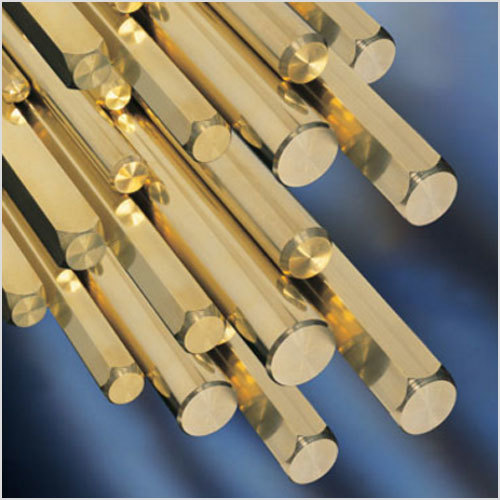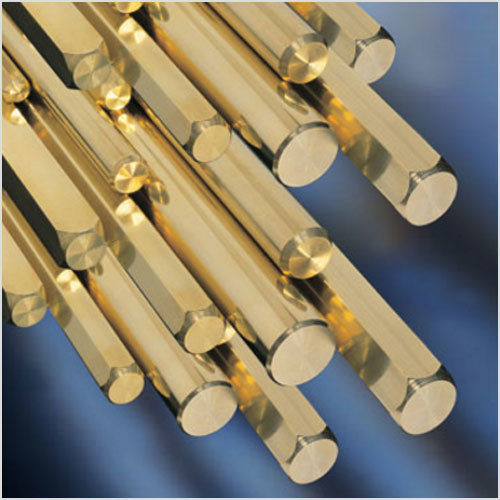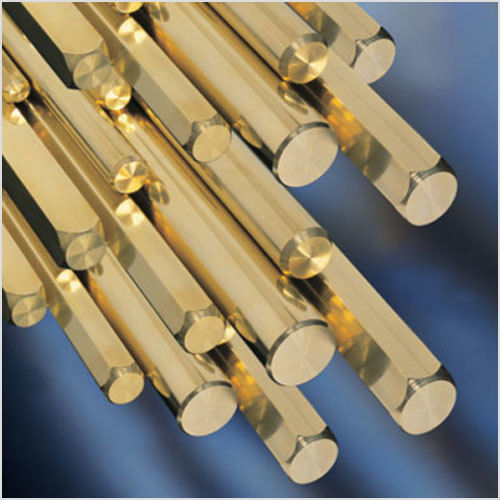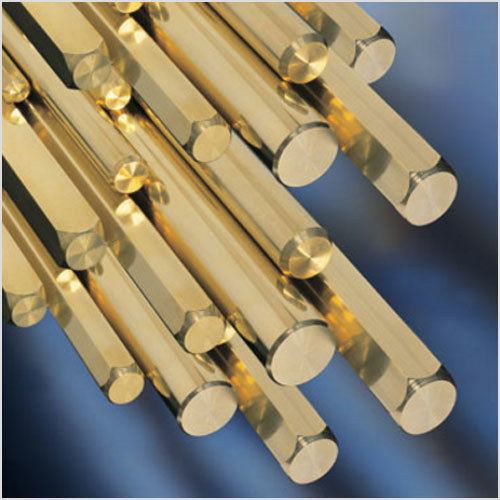ASTM B171 C 36500 Riveting Leaded Brass
Product Details:
- Type Riveting Leaded Brass
- Material Brass
- Grade ASTM B171
- Tolerance +/- 0.01 mm
- Alloy C36500
- Temper Half Hard
- Length As per requirement
- Click to View more
ASTM B171 C 36500 Riveting Leaded Brass Price And Quantity
- 400.00 - 600.00 INR/Kilograms
- 500 Kilograms
ASTM B171 C 36500 Riveting Leaded Brass Product Specifications
- Golden Yellow
- Riveting Leaded Brass
- Upto 100 mm
- +/- 0.01 mm
- Variable as per size
- Half Hard
- As per requirement
- ASTM B171
- Round Bar
- C36500
- Brass
ASTM B171 C 36500 Riveting Leaded Brass Trade Information
- 50000 Kilograms Per Month
- 3 Week
Product Description
ASTM B171 C 36500 Riveting Leaded Brass
e are one of the well recognized manufacturers and exporters of a sturdily designed array of Riveting Brass Rods. These are machined in sync with the industrial norms using modern machinery and excellent grade raw materials. Available in diverse specifications and at pocket friendly prices, our Riveting Brass Rods are well known across the global market owing to their incomparable performance, high conductivity, corrosion resistance and low maintenance.
| Specification : | |
| Riveting Brass |
|
| Chemical Requirements | CuZn40 | ||
| Copper | 59.0 - 62.0% | ||
| Lead | 0.75% max. | ||
| Iron | 0.10% max. | ||
| Total Imp. Excl. Iron | 0.300% max. | ||
| Zinc | Remainder | ||
| Physical Properties | |||
| Condition | Size mm | T.S.Kg/mm2 | EL% Min |
| Annealed (O) | 1.2 & above | 28 min. | 30% |
| As Manufactured | 1.2 & above | 35 min. | 25% |
| Fabrication Properties | |||
| Capacity for being | |||
| Machinability Rating | 55% | ||
| Bending | Excellent | ||
| Riveting | Excellent | ||
| Forging | Excellent | ||
| Uses | |||
| Ductile Alloy Suitable as Blanking, Riveting, Brazing and Upsetting | |||
Application Areas:
IS: 2074
BS: 2874 CZ119
IS: 4170/75
Cu Zn 38PB1 / 1.5.
High Performance Brass Alloy
Manufactured from premium C36500 alloy, this brass is tailored for advanced riveting and electrical component applications. Its half-hard temper balances strength and flexibility, while the bright golden finish ensures visual appeal. The alloys high lead content and excellent machinability make production efficient and performance notably reliable for demanding industrial uses.
Precision Engineering and Customization
Available in round bar shapes with diameters up to 100 mm and variable lengths, these brass bars are crafted to precise tolerances of +/- 0.01 mm. Customers can order sizes per their project requirement, ensuring optimal fit and function across diverse applications. Exporters and suppliers in India provide tailored solutions for global industries.
FAQs of ASTM B171 C 36500 Riveting Leaded Brass:
Q: How is ASTM B171 C36500 Riveting Leaded Brass typically used in industry?
A: This brass alloy is predominantly utilized in riveting, electrical components, and mechanical parts, where its machinability and corrosion resistance are highly valued. The excellent smooth finish supports efficient assembly, while the alloys precise dimensions provide reliable fitting.Q: What manufacturing standards does this leaded brass conform to?
A: ASTM B171 C36500 Riveting Leaded Brass strictly complies with ASTM B171 standards, ensuring consistent quality and performance across all supplied materials. This certification guarantees its suitability for demanding industrial environments.Q: Where can this brass alloy be sourced from?
A: Exporters, manufacturers, and suppliers based in India can provide ASTM B171 C36500 brass bars, offering a range of sizes and customized specifications to fulfill both domestic and international requirements.Q: When is it beneficial to select C36500 Riveting Leaded Brass over other brass alloys?
A: C36500 is advantageous when high machinability, excellent corrosion resistance, and a bright appearance are needed, particularly in applications requiring precise riveting and electrical connectivity, or where custom sizing is critical.Q: What is the process for ordering customized sizes and lengths of these brass bars?
A: Customers can specify their required diameter (up to 100 mm) and length. Suppliers in India accommodate these requests, producing bars according to project specifications with tolerances of +/- 0.01 mm for optimal precision and quality control.Q: How does the high lead content benefit the performance of this brass alloy?
A: A lead content of 2.5-3.5% enhances the alloys machinability, allowing easier cutting and shaping during manufacturing. This supports faster production rates and results in smoother finishes, making it ideal for intricate assemblies and components.Q: What advantages does using half-hard temper provide in applications?
A: The half-hard temper creates a balance between strength and ductility, offering a minimum tensile strength of 370 MPa and minimum elongation of 25%. This ensures the brass withstands mechanical stresses while remaining flexible enough for effective riveting and forming.
Price:
- 50
- 100
- 200
- 250
- 500
- 1000+
Other Products in 'Rivetting Leaded Brass Rods' category
 |
METAL ALLOYS CORPORATION
All Rights Reserved.(Terms of Use) Developed and Managed by Infocom Network Private Limited. |












